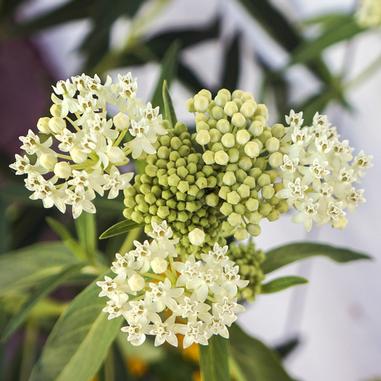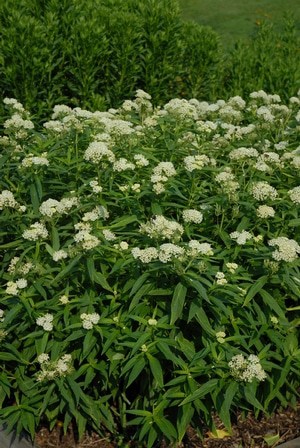The air was polluted with tiny tufts of cotton, which neither fell nor glided to the ground, but instead bounced around on the breeze like atoms pinging off each other before eventually descending and snagging onto any and every surface in the landscape. Some lawns seemed to take the brunt of the storm and became flocked and frosted. These downy white confections are the cotton-covered seeds of the mighty Cottonwood, and by the time we begin to notice them, the pollination has already ended. These dainty seeds can sail for up to five miles, and are another sign of Summer’s imminent arrival.
With just two weeks until the official start of Summer, we’ve already suffered some oppressive humidity, higher than normal temps, and a stunning lack of rain. We’ve been threatened with impending storms and rainfall, but have yet to experience any real precipitation, which means, supplemental watering may be needed.
It may be a bit preemptive; however, a decision should be made now regarding your lawn. When water is scarce and weather is hot and dry, lawns go dormant. It’s what they do. It’s a form of hibernation, a defense mechanism, if you will. Therefore, you must either decide to let the lawn go dormant or commit to watering. If you start watering, you must continue, at least until consistent rains arrive. Watering here and there actually does more damage than not watering at all. Here’s why.
Newly planted shrubs, perennials or trees should be carefully monitored. They are more susceptible than established plants and often suffer from leaf scorch during periods of hot, dry weather. They need about 1″ of water per week . Plain and simple.
Plants with deeper root systems, like Geraniums and many native plants, and prairie grasses require a longer soak and should be mulched to help maintain moisture. Roots make up about a 1/4 to a 1/3 of the total dry weight of a plant. Consider employing a soaker hose.
Trees too generally have deeper root systems, but they are more extensive and capable or reaching other water sources underground. Perennials and annuals aren’t as extensive and therefore require supplemental watering.
Remove water competitors, like weeds, who are fighting for the same moisture your other plants and lawn need.
Watering should be done either early in the morning before temperatures rise and winds pick up, OR early in the evening. Keep in mind, foliage needs time to dry before nightfall, so do not wait until dusk and never water at night.
Never employ water from a hose that was left in the sun. Water temperatures inside a hot hose can potentially damage plants. Always store hoses in cool, shaded areas where optimal temperatures are maintained for watering.
We may not technically be in a drought yet, but these methods can be employed throughout the season when rain is scarce. Feel free to reach out to Sweeney’s for additional tips or assistance with any of your landscape, gardening and/or watering needs.
Plant of the Week


Ice Ballet Milkweed
Clusters of creamy white, vanilla scented flowers bloom July – August amongst lance shaped foliage. Attractive seed pods emerge after flowering, providing Fall interest. Prefers sun to partial shade and moist soil. Grows in an upright clump 3-4′ tall and 3-4′ wide. Attracts butterflies. Deer resistant.
“Gardening requires lots of water – most of it in the form of perspiration.”
-Lou Erickson
Best wishes,
Kim Sweeney
